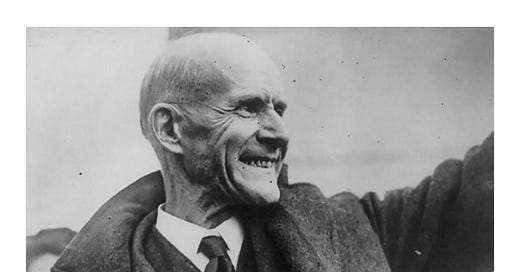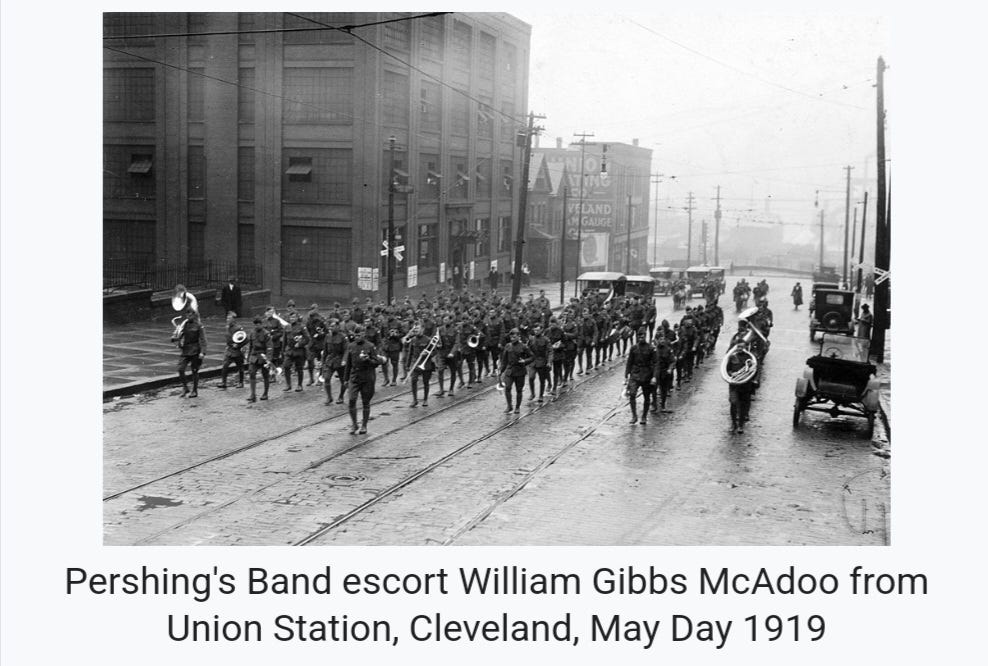By: Vix Burgett-Prunty
On May 1, 1919, in Cleveland, Ohio, a peaceful march turned into a violent confrontation that exposed the deep divisions in America after World War I. Workers, socialists, anarchists, and communists took to the streets to celebrate May Day, a global workers' holiday, and to protest the imprisonment of Eugene V. Debs, a prominent Socialist leader jailed for speaking out against the war. But what started as a demonstration for justice quickly became a bloody clash, fueled by wartime paranoia, anti-immigrant sentiment, and a growing fear of radical ideas. The march was led by Charles Ruthenberg, a Socialist running for mayor, who planned to speak in defense of Debs and workers' rights. The crowd carried both American flags and red flags, symbols of labor solidarity, along with banners that read "Workers of the World, Unite." But as they moved toward Public Square, they were stopped by Liberty Loan workers, a group that had helped fund the war effort, who demanded they lower their flags. When the marchers refused, tensions exploded.
Police and soldiers, some riding horses and even driving tanks, charged into the crowd. For hours, the streets of Cleveland became a battleground. By the end, two people were dead, dozens were injured, and over a hundred were arrested. Ruthenberg himself was charged with assault, though the case was later dropped. The Socialist Party’s headquarters was ransacked, and the city quickly passed laws to ban red flags and restrict public gatherings.
Newspapers blamed the violence on immigrants and so-called "Bolshevik agitators," ignoring the real issue: a system that punished dissent and treated working-class protests as a threat. The truth was, the marchers were fighting for basic rights, fair wages, freedom of speech, and the release of a man imprisoned for opposing war. But in 1919, with the country still reeling from war and fearing revolution, the establishment saw any challenge to its power as dangerous.
This wasn’t just about politics. It was about humanity. The people in the streets that day were workers, neighbors, immigrants, and citizens who believed in a better world. Yet they were met with tanks and bullets because those in power feared change. The Cleveland riot was a preview of the Red Scare, a wave of repression that would soon sweep the nation, targeting labor activists, immigrants, and Black communities alike.
Looking back, May Day 1919 in Cleveland reminds us that the fight for justice has always been met with resistance. It shows how fear can turn into violence, how dissent can be criminalized, and how those in power will often side with repression over fairness. But it also reminds us that people have always stood up, even when the cost was high. Their struggle wasn’t just about one day or one protest. It was about the right to demand a world where everyone has a voice. And that’s a fight that continues today.
References
1. Case Western Reserve University, Encyclopedia of Cleveland History
2. Wikipedia
3. Labor History in 2:00 Podcast
4. Murray, Robert K. (1955). Red Scare: A Study in National Hysteria, 1919–1920
5. Preston, William Jr. (1994). Aliens and Dissenters: Federal Suppression of Radicals, 1903–1933
6. Avrich, Paul (1991). The Anarchist Voices: An Oral History of Anarchism in America
7. Cleveland Press & Plain Dealer (1919)
8. Debs, Eugene V. (1918). Canton, Ohio Speech
9. Zinn, Howard (1980). A People’s History of the United States
10. Golin, Steve (1988). The Fragile Bridge: Paterson Silk Strike, 1913





